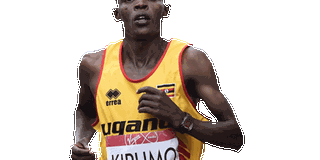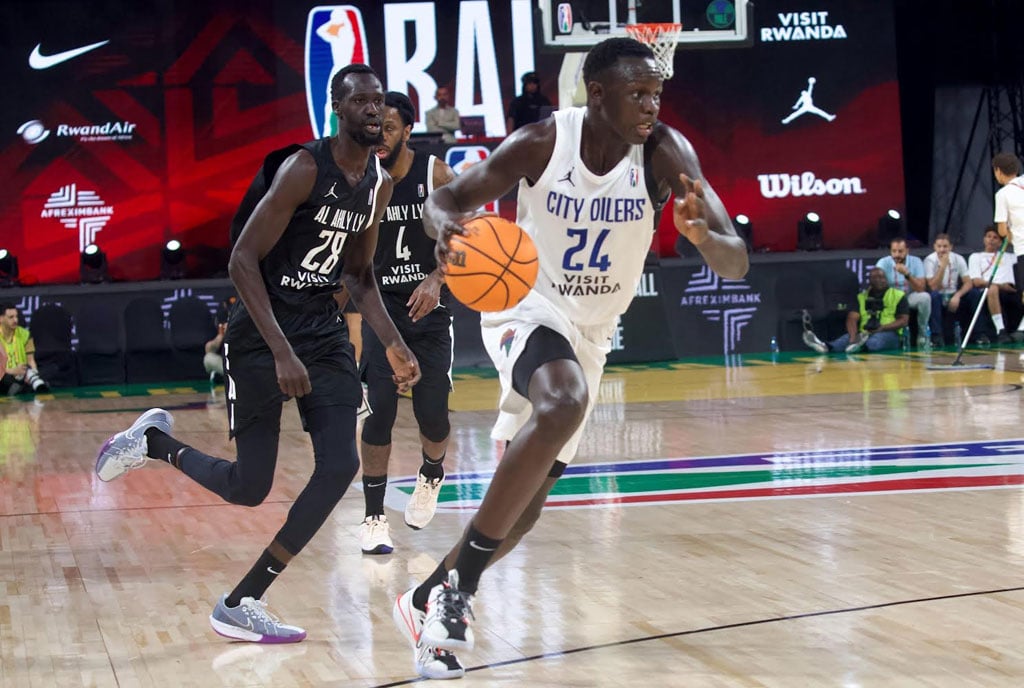Why marathon running could do with a little love from govt

Marathoner Kiplimo won Uganda’s first medal in Glasgow. PHOTO BY AFP
Abraham Kiplimo’s podium finish at the Commonwealth Games that end today in the Scottish city of Glasgow is yet more proof that Ugandan athletes are not just increasingly gravitating toward the marathon but also hitting the jackpot.
Kiplimo beat several odds, including a tumble at the 38km mark, to win bronze. Some observers reckon the script would have had a different endnote had Kiplimo not tum-bled. Others add that had Jackson Kiprop, the 2013 Mumbai Marathon champion, not been struck down by a subtle illness, Uganda would have had more than a singular representative at the podium.
All of this of course rests on a cornerstone of conjecture, but also goes to show the extraordinary levels of respect that Ugandan marathon running currently commands. The reverence is undoubtedly an offshoot of Stephen Kiprotich’s prolific conquests at the London Olympics in 2012 and 2013 World Athletics Championships in the Russian capital of Moscow.
The victory in Moscow was unusually good on an individual level because it made Kiprotich only the second man - after Ethiopia’s Gezahegne Abera - to win successive gold medals in marathons at the Olympics and World Athletics Championships.
While Kiprotich went it alone on the streets of London, he got some help from the side-shows of Kiplimo and Kiprop in Moscow. As it turns out, Kiplimo and Kiprotich share much more in common than just the Kip prefix.
Both hail from Kapchorwa and were born in the same year — 1989 (Kiprotich in February and Kiplimo two months later in April).
Far from being chalk and cheese, Kiprotich and Kiplimo started their careers as long distance runners. While Kiprotich used to run 10,000 metres, Kiplimo tried a hand at 5000 metres. Both failed to make an impression on the track and consequently had to look elsewhere.
Incidentally, the turning point for both athletes came in marathons that took place in the Land of the Rising Sun as Japan is known.
Kiprotich’s watershed moment came when he finished third at the 2012 Tokyo Marathon in two hours, seven minutes and 50 seconds. That same year, Kiprotich won gold at the London Olympics. A year later he was a world champion.
Kiplimo’s lucky break came early this year when he won the Beppu-Oita Marathon in Japan in a PB of two hours, nine minutes and 23 seconds. The win seems to have galvanised Kiplimo if his third placement in Glasgow is anything to go by. No doubt he will be rubbing his hands in anticipatory relish when the Olympic Games make a stop in Rio in 2016.
Oh, there is a unifying strand that your columnist almost overlooked. Uganda doesn’t have a high altitude training facility, so both Kiprotich and Kiplimo hone their skill in the Kenyan Great Rift Valley village of Kaptagat.
A tectonic marvel that has both low and high altitude challenges, Kaptagat is becoming the destination of many formidable distance runners. Meanwhile, there is a conspiracy of silence about construction of a high altitude training centre in Teryet, Kapchorwa.
All signs are that everything is being done to ensure that the centre remains a figment of our imagination.
What a pity because our athletes are increasingly warming up to distance running!
Hold onto your knives! 7s rugby could well scale the heights
Rebuilding process. The first fruits of Onyango’s project came at the Masaku 7s where a select Ugandan side placed second behind Fijian outfit, Tabadamu, in the Kenyan township of Machakos.
Sevens rugby in Uganda has for a protracted period been a residual something which is arrived at after giving 15s rugby its due. Not any more as 2014 has turned out to be the exception that proves the rule.
This as Tolbert Onyango’s much-vaunted ‘Project 2016’ gives suggestions of sweet fruition. The project has since 2013 set out to have in place a nucleus of sevens players on which Ugandan rugby will piggyback as it attempts to make the grade for the 2016 Olympics.
The first fruits of the project came at the Masaku 7s where a select Uganda side placed second behind Fijian outfit, Tabadamu, in the Kenyan township of Machakos.
The recently concluded Commonwealth Games in Glasgow, Scotland, may superficially have looked like a slippery slope; but relevant authorities proffered that they offered a steep learning curve. The privileging of 15 rugby in Uganda had led to an erasure of identities of the short version of the sport. Devoid of subjectivities, sevens rugby was held to an assumption of inferiority as much as oblivion.
It’s now on track to claim its status as Ugandan rugby’s modern day trailblazer. Its otherness is now being celebrated and not subverted.
Which is just as well seeing as the maiden footnotes of Ugandan rugby at the international scene were written by sevens players.
Think the Henley 7s and the iconicity of that run-out on the IRB Sevens Circuit in 2003 that, among others, saw Uganda pick France’s scalp.
The challenging of that binary of presence (15s) and absence (7s) could yet be the best thing that has ever happened to Ugandan rugby.
It could help jolt the flagging sport back to life. It will certainly help Uganda realign its modus operandi to reflect best practices.
The paradigm of an ideal, if successful, rugbying nation is one that has sevens rugby in a functional state.
Thankfully, the Uganda Rugby Union (URU) is starting to acknowledge this - or be it belatedly. Paul Nyangabyaki, the head of the Union’s Technical Committee (TC), recently told your columnist that they “are using sevens as a sort of academy for promising youngsters to sharpen skills and experience high performance training”.
Nyangabyaki added: “In short we don’t envisage our sevens players being confined to sevens only for more than three years as along as we are not part of IRB Sevens Circuit. Some individuals, however, are likely to stick there longer and form the core of the sevens team”.
The Union is also planning to tweak the national sevens circuit. Funds permitting, it wants four circuits to be held within each region (Central, North, East, West). The top two clubs from each region will then form a franchise that will feature in the national sevens circuit alongside the top eight seeded clubs. Sevens rugby at the underage level will also undergo a retouch, with the Independence 7s schools tournament set to be revamped. All these plans look great on paper and if followed to the letter could well make Ugandan sevens rugby formidable.
There will even be a bigger buzz about sevens rugby if Uganda manages to place second at the CAR 7s tournament due to take place in the Kenyan capital of Nairobi, September. Finishing in the top two echelons could see Uganda invited to at least two legs on the IRB circuits (most likely South Africa and Hong Kong).
Nyangabyaki says such a development - if it does see the light of day anyway - will be “a stepping stone”. And what a stepping stone it would be!
Many hurdles, though, will have to be jumped, including the impending departure of Tolbert Onyango, a Uganda sevens rugby scion in many respects. The Union will have to do everything in its powers to detonate such strictures.
What we now know...
We know that - not for the first time - boxing has proved that it can deliver medals at the big time.
If we needed any reminding, Michael Sekabembe (super heavyweight) and Juma Fazil Kaggwa (light fly) had no problems doing just that at the Commonwealth Games that grind to a halt today in Glasgow, Scotland.
We know that the 40 percent succession rate of Ugandan boxers at the Games (two members of the five-man team won medals) was one of the few bright sparks during what largely was an underwhelming campaign.
That the boxers managed to achieve such a feat even with alien cornermen just goes to show the potential brimming in this particular sports discipline.
We know that we could have sent more boxers to Glasgow - the local boxing federation actually wanted to send 10 - but the powers that were obstinate enough to turn a deaf ear.
It was nonetheless a commendable showing by the national boxing team, the Bombers.
And what an upturn in fortunes for Sekabembe! The UPDF boxer who has served in a number of dangerous missions was in 2007 knocked cold by Charles Mwanga during the national boxing trials. Many were quick to write him off.
But, at 34, Sekabembe has turned things around. The 2016 Olympics in Rio will surely find him at the peak of his powers.




